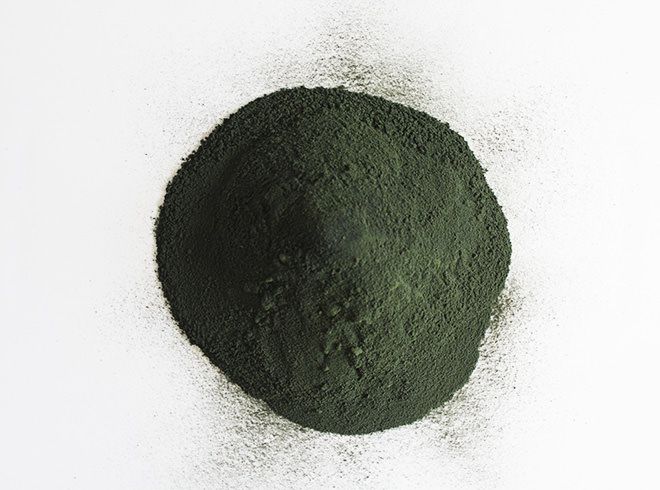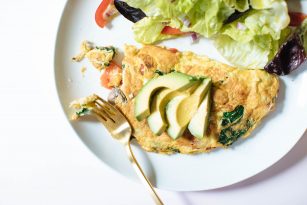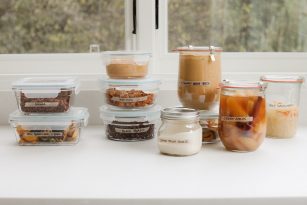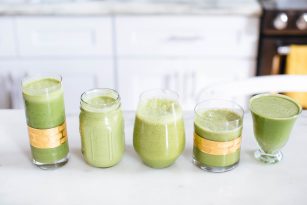What Is Spirulina?
Spirulina is a dark, blue-green algae powder that’s grown in water and known for its amazing health benefits. Spirulina is used in many different cuisines, but it’s probably most popular within the plant-based communities as it’s very high in protein and other wonderful nutrients.
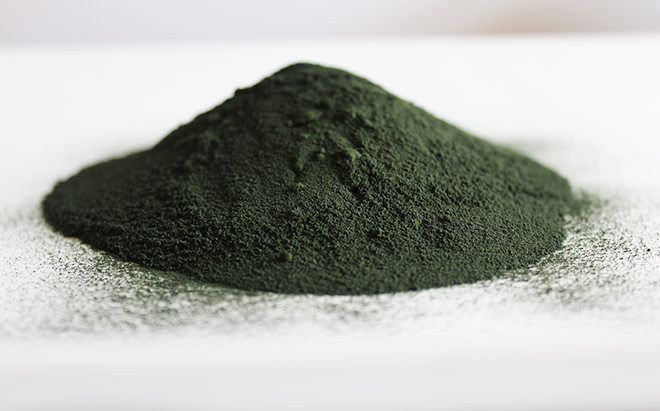
What is Spirulina?
Spirulina is a type of blue-green micro-algae that’s grown and harvested from very alkaline water sources. It was long used by the Aztecs as a food source because of its potent nutrient content. Spirulina is commonly found in several forms: tablets — which are chewable, fine powder, flakes, and pills or capsules.
When Purchasing Spirulina
Keep in mind to purchase only organic varieties that are processed at very low heat to retain the maximum nutrition. Since spirulina is grown in and comes from water, it’s surrounded by free toxins floating in the water and is more susceptible to contamination of heavy metals. These toxins, called microcystins, can mostly be avoided by purchasing from a trusted brand who grows it organically. Notice I say mostly – there are some studies (and more here) that show some less than beneficial side effects of spirulina.
Not only do I love the nutritional punch that spirulina provides, but I also love its array of other health benefits such as antioxidant and anti-inflammatory properties, immune function improvement, protection of the liver, reduction of allergic reactions, increased muscle endurance and oxidative stress, reduced oral cancer, possible support in fighting infections and antibiotic-related illnesses.
Nutrient Breakdown of Spirulina
- Protein | 50-70% by weight of bioavailable, easy to digest protein. Per 100g contains 57g of protein (!!!)
- Compare to 100g of chicken, which contains 16g of protein OR 100g of nature’s “golden protein” the egg, which contains 13g of protein. You see the protein power of spirulina now!
- Amino acids | contains all amino acids, including essential amino acids, making it a complete protein
- Healthy fats | mostly in the form of polyunsaturated fatty acids.
- Omega-3 fatty acids | linolenic acid, 0.8g/100g
- Omega-6 fatty acids | linoleic acid, GLA 1.2g/100g
- Vitamin B12 | Special Note: the form of B12 found in spirulina is a psuedovitamin B12, therefore is not a reliable source of B12 for humans as it’s inactive. The B12 is considered an analogue, which does not have the same bioavailability as animal sources of B12.
- Vitamin A, D, K, E
- Vitamin B | B1 (thiamin), B2 (riboflavin), B3 (niacin), folic acid, B5
- Antioxidants | carotenoids } beta-carotene, lutein, zeaxanthin, cryptoxanthin
- Chlorophyll
- Copper | 6/1mg/100g
- Iron | 28mg/100g
- Magnesium | 195mg/100g
- Potassium | 1.3g/100g
- Manganese | 1.9mg/100g
- Zinc | 2mg/100g
This is not a complete list, but here are a couple brands I enjoy:
- Healthforce Nutritionals (spirulina manna powder)
- Cyanotech (spirulina pacifica)
- Earth Circle Organics (raw spirulina powder).
I typically store spirulina in the freezer or refrigerator to retain it’s freshness as much as possible. If it doesn’t come in a dark glass bottle, I suggest purchasing one or at least keeping it in an airtight container made of glass in the freezer or refrigerator away from light. Spirulina is a delicate algae full of antioxidants, nutrients, and chlorophyll, all of which you need to preserve. Following these steps will help to do so.
Spirulina Tips:
- Natural food dye | You can use a little spirulina powder as a natural food dye for a greenish-blue color
- Drink water | Make sure you have some water around you to swish your mouth around after you drink anything with spirulina as it has a tendency to stain your teeth while your eating it!
- Spirulina Coconut Water | For a quick protein packed drink, I’ll mix about 1 Tbs. of spirulina into my coconut water. Talk about alkalizing!
If you follow Nutrition Stripped on Instagram, you know all too well that I love adding spirulina into my smoothies very often. Now you can understand why!
Recipes to Try:
Tropical Superfood Smoothie Bowl
Have you ever tried spirulina? If you use spirulina, what’s your favorite way to incorporate it into your eats? Share below, I love hearing your comments!
xx McKel



